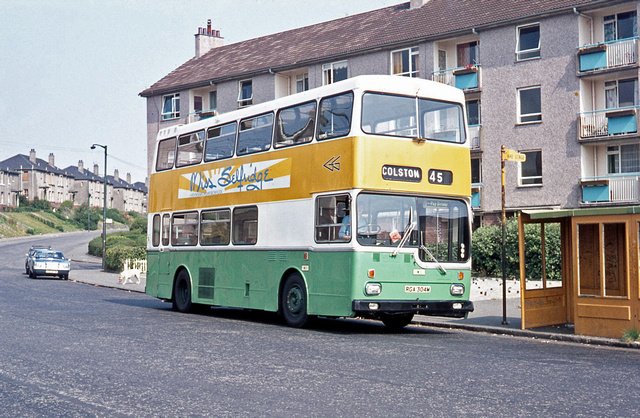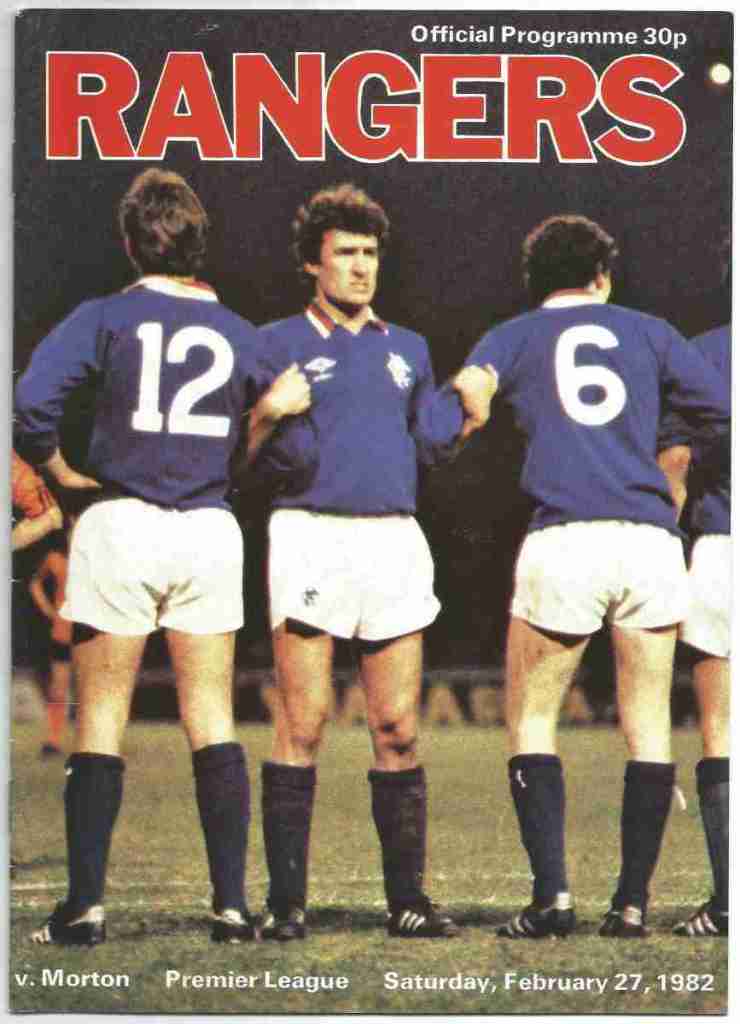
Around five miles in a south-westerly direction from Glasgow city centre, overlooking the Levern Water, sits Crookston Castle – the only surviving medieval castle in the city.
The current structure was built by Sir Alexander Stewart, who held Crookston from 1374 until 1406, and it a castle which has played its part in Scottish history.
For example, during a rebellion by the Earl of Lennox in 1489, James IV bombarded the castle with Mons Meg – the famous cannon which is now housed at Edinburgh Castle – causing substantial damage to the structure and a swift end to the rebellion. The castle was also the location where Henry Stuart, Lord Darnley and Mary, Queen of Scots were betrothed.
In the 1750s it came into the possession of the Maxwells of Pollok, but fell into a state of disrepair until it was partially restored to commemorate the visit of Queen Victoria to the city in 1847. During the Second World War the north-east tower of the castle was used to spot enemy aircraft during the blitz. It is an unassuming castle, and certainly not as grand as some other castles in Scotland, but it has certainly played it’s part in the history of Glasgow.
The castle has also played a big part in my personal history as, from 1973 until 1989, it looked down onto my bedroom in my nanas flat on Brockburn Rd – providing an ever-present and reassuring silhouette at nights during my visits back to the city of my birth.
It was under the protective gaze of the castle that I ventured from Brockburn Rd one Saturday in February 1982 to attend a game at Ibrox for the very first time – to witness a league game against Morton.
I am a Glaswegian by birth, and was born a mere half-decent goal-kick away from Ibrox Park in Govan’s then Southern General Hospital. I stayed initially in a tenement flat on Cathcart Rd with my parents.
However when my dad secured work in the highlands at Invergordon’s aluminium smelter later that year, we relocated to Easter Ross and specifically to a small estate in Alness by the name of Milnafua, which was custom-built to deal with the huge influx of workers coming up from Glasgow to take advantage of the economic opportunity the smelter provided.
Milnafua has been in the news recently for all the wrong reasons, and it’s fair to say it does not enjoy the best of reputations these days. However it was considered an estate of such stature back in those days that it was officially opened by HRH Queen Elizabeth in 1974, and it was great place to live then.
We lived in Milnafua for ten years, but every Easter, summer and Christmas would mean the trip back to Glasgow, and specifically Brockburn Rd in Pollok, to catch up with family. It felt like we were a family of two homes – actual and spiritual – and it was on one of the trips to the latter that I first took in my first game at Ibrox.
By February 1982, however, the Highland adventure had turned sour, and in serious danger of ending after it was announced in the previous December that the smelter in Invergordon was to close.
This was problematic as both my parents worked there. The opening of the smelter had boosted the population of the area rapidly, and almost overnight.
Now with 900 jobs directly being lost with the closure, along with a further 600 indirect jobs, the local economy struggled to support the number of people now living in the area and the unemployment rate hit a staggering 25%.
Although the announcement was made in December ‘81, the smelter stayed open until the June of ‘82. So as we headed south to Glasgow that February my parents weren’t yet out of work – but there was a storm on the horizon and some difficult decisions would have to be made. But none of that was on the minds of my dad and I as we left Brockburn Road that afternoon to head to my first ever Rangers game.
If truth be known, Rangers were not yet totally at the forefront of my thoughts. I was very aware of Rangers and was a Rangers supporter, but the club and football in general took a backseat at this time compared to my love of all things Star Wars and music, particularly Adam & the Ants. Football and Rangers would come more to the fore after the summer of ’82 and the World Cup in Spain, but for now I was more interested in who was number one in the charts than whether it was Jim Stewart or Peter McCloy wearing the number one jersey for Rangers.
My dad and I set off about 1pm, heading up Brockburn Rd past Crookston Castle Primary, over the Levern Water and towards Braidcraft Rd. From there we walked towards Corkerhill Rd to jump a bus to the stadium.
This was the time when the buses in Glasgow were green, white and yellow, which made for an element of discomfort for those of a Rangers persuasion. The tables were turned by the mid-80s though when the colour of the buses were dramatically changed to orange – proving that even the buses in Glasgow couldn’t escape the sectarian divisions of the city.
The bus journey didn’t take long, although we were now officially running late, and by the time it dropped us off at the point Paisley Rd West meets Edmiston Drive, the game had already kicked off. We scampered in a hurried fashion down Edmiston Drive towards the Copland Road stand and in we went.
Billy Connolly once remarked that the Queen thinks the world smells of paint, because everywhere she went some poor panic-stricken guy was five feet in front of her trying to apply the final coat of paint to some wall or other, and Ibrox felt like that on this day. The Copland Road stand had only been redeveloped in 1979 and it definitely had a new, shiny feel to it as I gazed around the concourse while my dad procured the pies and Bovril’s.
Then came the moment we all have as Rangers supporters, the moment you climb the stairs and look down onto the Ibrox pitch for the first time.

As I walked up the stairs from the concourse, Ibrox revealed itself in stages. Firstly just sky, then a glimpse of the roofs of the Broomloan and brand new Govan stand, then a sight of the colour coordinated seats, a first glimpse of the old main stand and then finally the pitch, the huge square goalposts and the players – who were already in action.
As I looked down I saw my first glimpse of action at Ibrox, and it was Colin Jackson – wearing the number five jersey on his back, grey hair making him look much older than his 36 years – who was striding forward confidently with the ball in what was ultimately his final season with the club. And that is all I can really remember about the game, that and that Rangers won 3-0.
Research tells me that only 10,200 were in attendance that day and that, despite the scoreline, Rangers huffed and puffed to put the game to bed – despite going 1-0 up early doors thanks to a goal by John MacDonald – requiring two very late strikes by Gordon Dalziel and Billy McKay to secure the win. It also tells me Jim Bett, Bobby Russell and Sandy Jardine were the standout performers for Rangers on the day. But the truth is I have no memory of these finer details, and such was the rush to get into the stadium due to us being late I don’t even have a copy of the match programme from that day – which feels like I’ve committed an international war crime of some kind.
But I was there, and it started a lifelong love of Rangers and attending games that continues to this day.
After the final whistle my dad and I headed back to Brockburn Rd to my mum, aunties, uncles and my nana – and a Saturday night that would have probably encompassed watching Buck Rodgers in the 25th Century and Game for a Laugh on the telly, with a decent amount of alcohol being consumed by the adults – it was a Saturday night in Glasgow after all!
It would be one of the final journeys we made back to Glasgow from Alness. By March of the following year we had relocated to Cumbernauld as the search for new employment failed and the redundancy money ran out.
It was undoubtedly an unsettling time for a boy of my age; new school, new friends, new environment… But on the plus side my new location meant that trips to Glasgow and, more importantly, Ibrox, were about to become a little bit easier.
Rangers – Stewart, Jardine, Dawson, McAdam, Jackson, Bett, Cooper, Russell, Johnstone, Miller, MacDonald Subs – McKay, Dalziel
GOALS: MacDonald 17; Dalziel 80; McKay 83
Morton – Baines, Hayes, McLaughlin, Duffy, Holmes, Rooney, Busby, Docherty, Hutchison, Houston, Slaven Subs – Ritchie, McNeil
Referee – J.J. Timmons (Kilwinning)
Attendance – 10,200




Hi Colin. Thanks for that as it brings back some good (and bad) memories. My wife was raised in Alness (Firhill) and was friends with Eric Black who went on to play for Aberdeen. Like you her father also worked in the Smelter but found work after it’s closure. Attendance was 10566
Thanks for reading, David. Yeah, pretty sure Eric Black went to Alness Academy at some point. Think he was also originally from Glasgow. I moved back to Cumbernauld in 83 just as there was some chat starting up there about him.